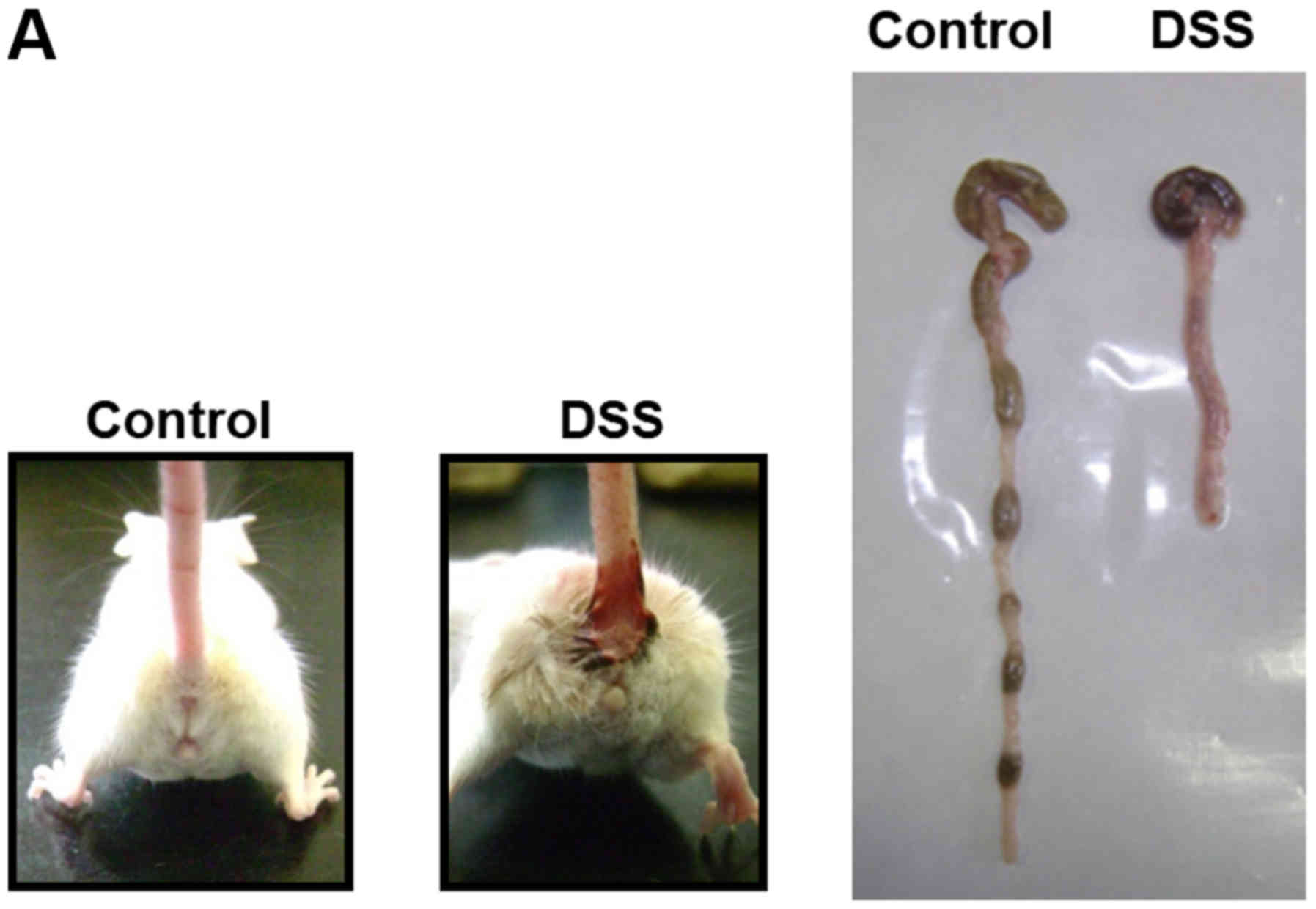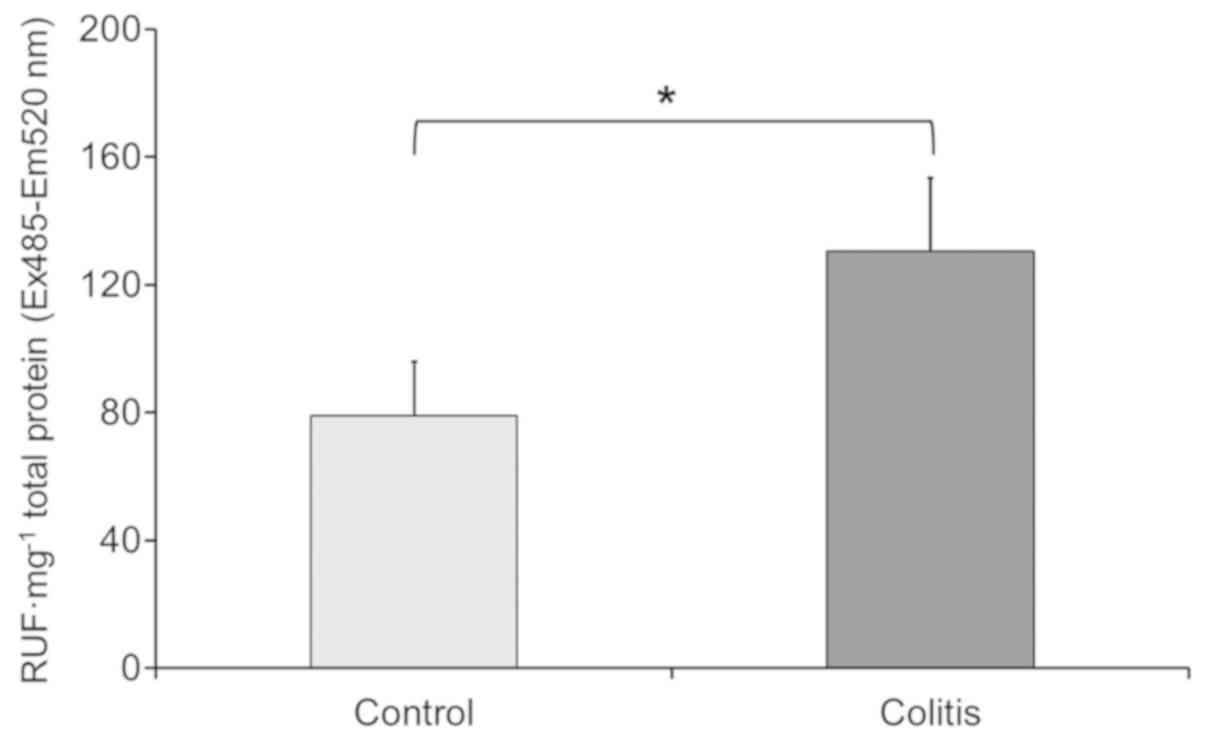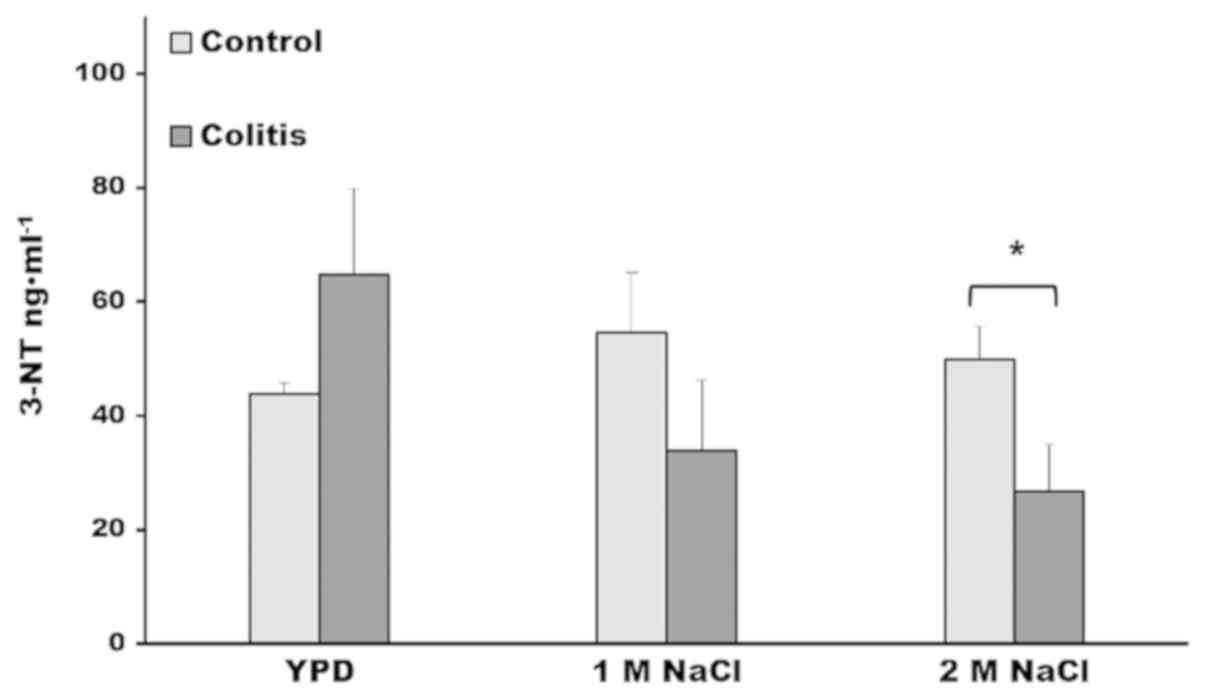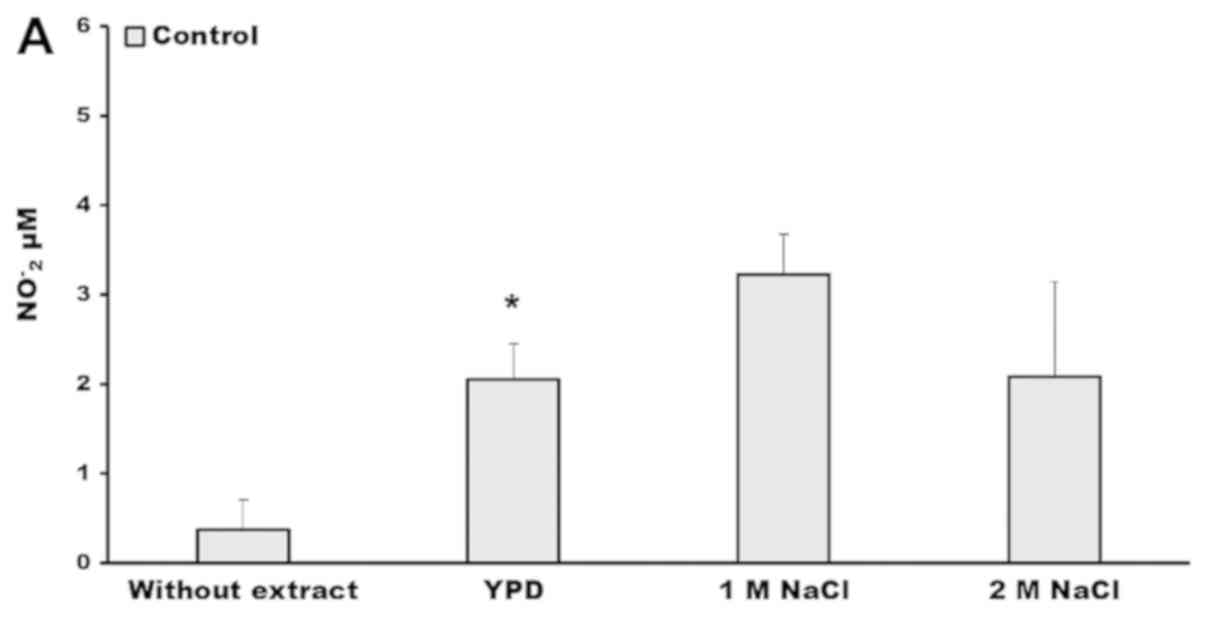|
1
|
Ischiropoulos H: Biological tyrosine
nitration: A pathophysiological function of nitric oxide and
reactive oxygen species. Arch Biochem Biophys. 356:1–11. 1998.
View Article : Google Scholar : PubMed/NCBI
|
|
2
|
Ahsan H: 3-Nitrotyrosine: A biomarker of
nitrogen free radical species modified proteins in systemic
autoimmunogenic conditions. Hum Immunol. 74:1392–1399. 2013.
View Article : Google Scholar : PubMed/NCBI
|
|
3
|
Brownlee M: Biochemistry and molecular
cell biology of diabetic complications. Nature. 414:813–820. 2011.
View Article : Google Scholar
|
|
4
|
Ceriello A and Testa R: Antioxidant
anti-inflammatory treatment in type 2 diabetes. Diabetes Care. 32
(Suppl 2):S232–S236. 2009. View Article : Google Scholar : PubMed/NCBI
|
|
5
|
Butterfield DA, Reed T and Sultana R:
Roles of 3-nitrotyrosine- and 4-hydroxynonenal-modified brain
proteins in the progression and pathogenesis of Alzheimer's
disease. Free Radical Res. 45:59–72. 2011. View Article : Google Scholar
|
|
6
|
Academia Nacional de Medicina de México, .
Enfermedad por hígado graso no alcohólico. Boletín De Información
Clínica Y Terapéutica. 24:7–8. 2015.
|
|
7
|
Di Rosa M and Malaguarnera L: Genetic
variants in candidate genes influencing NAFLD progression. J Mol
Med (Berl). 90:105–118. 2012. View Article : Google Scholar : PubMed/NCBI
|
|
8
|
Botteri G, Montori M, Gumà A, Pizarro J,
Cedó L, Escolà-Gil JC, Li D, Barroso E, Palomer X, Kohan AB and
Vázquez-Carrera M: VLDL and apolipoprotein CIII induce ER stress
and inflammation and attenuate insulin signaling via Toll-like
receptor 2 in mouse skeletal muscle cells. Diabetologia.
60:2262–2273. 2017. View Article : Google Scholar : PubMed/NCBI
|
|
9
|
Ipsen DH, Lykkesfeldt J and Tveden-Nyborg
P: Molecular mechanisms of hepatic lipid accumulation in
non-alcoholic fatty liver disease. Cell Mol Life Sci. 75:3313–3327.
2018. View Article : Google Scholar : PubMed/NCBI
|
|
10
|
Danese S and Fiocchi C: Ulcerative
colitis. N Engl J Med. 365:1713–1725. 2011. View Article : Google Scholar : PubMed/NCBI
|
|
11
|
Kmieć Z, Cyman M and Ślebioda TJ: Cells of
the innate and adaptive immunity and their interactions in
inflammatory bowel disease. Adv Med Sci. 62:1–16. 2017. View Article : Google Scholar : PubMed/NCBI
|
|
12
|
Ungaro R, Mehandru S, Allen PB,
Peyrin-Biroulet L and Colombel JF: Ulcerative colitis. Lancet.
389:1756–1770. 2017. View Article : Google Scholar : PubMed/NCBI
|
|
13
|
Wang J, Sun H, Meng P, Wang M, Tian M,
Xiong Y, Zhang X and Huang P: Dose and time effect of CdTe quantum
dots on antioxidant capacities of the liver and kidneys in mice.
Int J Nanomedicine. 12:6425–6435. 2017. View Article : Google Scholar : PubMed/NCBI
|
|
14
|
Stojsavljević S, Gomerčić Palčić M,
Virović Jukić L, Smirčić Duvnjak L and Duvnjak M: Adipokines and
proinflammatory cytokines, the key mediators in the pathogenesis of
nonalcoholic fatty liver disease. World J Gastroenterol.
20:18070–18091. 2014. View Article : Google Scholar : PubMed/NCBI
|
|
15
|
Manček-Keber M, Frank-Bertoncelj M,
Hafner-Bratkovič I, Smole A, Zorko M, Pirher N, Hayer S,
Kralj-Iglič V, Rozman B, Ilc N, et al: Toll-like receptor 4 senses
oxidative stress mediated by the oxidation of phospholipids in
extracellular vesicles. Sci Signal. 8:ra602015. View Article : Google Scholar : PubMed/NCBI
|
|
16
|
Ortiz-Reyes AE and Calderón-Torres CM:
Incremento de la expresión de TLR4 y efecto antioxidante del ácido
acetilsalicílico en conejos con dieta alta en grasas. Revista De
Salud Pública Y Nutrición. 16:1–10. 2017.
|
|
17
|
Solís-Herruzo JA and Solís-Muñoz P:
Manifestaciones hepatobiliares en la enfermedad inflamatoria
Intestinal. Rev Esp De Enferm Dig. 99:525–542. 2007. View Article : Google Scholar
|
|
18
|
Erkan G: Inflammatory bowel disease and
primary sclerosing cholangitis. Ulcerative colitis epidemiology,
pathogenesis and complications. O'Connor Dr Mortimer: ISBN:
978-953-307-880-889. 2011, View
Article : Google Scholar
|
|
19
|
Dohan A, Faraoun SA, Barral M, Guerrache
Y, Boudiaf M, Dray X, Hoeffel C, Allez M, Farges O, Beaugerie L, et
al: Extra-intestinal malignancies in inflammatory bowel diseases:
An update with emphasis on MDCT and MR imaging features. Diagn
Interv Imaging. 96:871–883. 2015. View Article : Google Scholar : PubMed/NCBI
|
|
20
|
Smallwood HS, Lourette NM, Boschek CB,
Bigelow DJ, Smith RD, Pasa-Tolić L and Squier TC: Identification of
a denitrase activity against calmodulin in activated macrophages
using high-field liquid chromatography-FTICR mass spectrometry.
Biochemistry. 46:10498–10505. 2007. View Article : Google Scholar : PubMed/NCBI
|
|
21
|
Zeyer J and Kocher HP: Purification and
characterization of a bacterial nitrophenol oxygenase which
converts ortho-nitrophenol to catechol and nitrite. J Bacteriol.
170:1789–1794. 1988. View Article : Google Scholar : PubMed/NCBI
|
|
22
|
Nishino SF and Spain JC: Biodegradation of
3-nitrotyrosine by Burkholderia sp. strain JS165 and Variovorax
paradoxus JS171. Appl Environ Microbiol. 72:1040–1044. 2006.
View Article : Google Scholar : PubMed/NCBI
|
|
23
|
Arora PK, Srivastava A and Singh VP:
Application of monooxygenases in dehalogenation, desulphurization,
denitrification and hydroxylation of aromatic compounds. J Bioremed
Biodegrad. 1:1122010. View Article : Google Scholar
|
|
24
|
Castro DE, Murguía-Romero M, Thomé PE,
Peña A and Calderón-Torres M: Putative 3-nitrotyrosine detoxifying
genes identified in the yeast Debaryomyces hansenii: In silico
search of regulatory sequences responsive to salt and nitrogen
stress. Electron J Biotechn. 29:1–6. 2017. View Article : Google Scholar
|
|
25
|
Chao HF, Yen YF and Ku MS:
Characterization of a salt-induced DhAHP, a gene coding for alkyl
hydroperoxide reductase, from the extremely halophilic yeast
Debaryomyces hansenii. BMC Microbiol. 9:1822009. View Article : Google Scholar : PubMed/NCBI
|
|
26
|
Calderón-Torres M, Castro DE, Montero P
and Peña A: DhARO4 induction and tyrosine nitration in response to
reactive radicals generated by salt stress in Debaryomyces
hansenii. Yeast. 28:733–746. 2011. View
Article : Google Scholar : PubMed/NCBI
|
|
27
|
Calderón-Torres M, Peña A and Thomé PE:
DhARO4, an amino acid biosynthetic gene, is stimulated by high
salinity in Debaryomyces hansenii. Yeast. 23:725–734. 2006.
View Article : Google Scholar : PubMed/NCBI
|
|
28
|
Ledesma-Soto Y, Callejas BE, Terrazas CA,
Reyes JL, Espinoza-Jiménez A, González MI, León-Cabrera S, Morales
R, Olguín JE, Saavedra R, et al: Extraintestinal helminth infection
limits pathology and proinflammatory cytokine expression during
DSS-induced ulcerative colitis: A role for alternatively activated
macrophages and prostaglandins. Biomed Res Int. 2015:5634252015.
View Article : Google Scholar : PubMed/NCBI
|
|
29
|
Chang YC, Ching YH, Chiu CC, Liu JY, Hung
SW, Huang WC, Huang YT and Chuang HL: TLR2 and interleukin-10 are
involved in Bacteroides fragilis-mediated prevention of DSS-induced
colitis in gnotobiotic mice. PLoS One. 12:e01800252017. View Article : Google Scholar : PubMed/NCBI
|
|
30
|
Song J, Ke SF, Zhou CC, Zhang SL, Guan YF,
Xu TY, Sheng CQ, Wang P and Miao CY: Nicotinamide
phosphoribosyltransferase is required for the calorie
restriction-mediated improvements in oxidative stress,
mitochondrial biogenesis, and metabolic adaptation. J Gerontol A
Biol Sci Med Sci. 69:44–57. 2014. View Article : Google Scholar : PubMed/NCBI
|
|
31
|
Hempel SL, Buettner GR, O'Malley YQ,
Wessels DA and Flaherty DM: Dihydrofluorescein diacetate is
superior for detecting intracellular oxidants: comparison with
2′,7′-dichlorodihydrofluorescein diacetate, 5(and
6)-carboxy-2′,7′-dichlorodihydrofluorescein diacetate, and
dihydrorhodamine 123. Free Radic Biol Med. 27:146–159. 1999.
View Article : Google Scholar : PubMed/NCBI
|
|
32
|
Gadjeva VS, Goycheva P, Nikolova G and
Zheleva A: Influence of glycemic control on some real-time
biomarkers of free radical formation in type 2 diabetic patients:
An EPR study. Adv Clin Exp Med. 26:1237–1243. 2017. View Article : Google Scholar : PubMed/NCBI
|
|
33
|
Zuwała-Jagiełło J, Pazgan-Simon M, Simon K
and Warwas M: Elevated advanced oxidation protein products levels
in patients with liver cirrhosis. Acta Biochim Pol. 56:679–685.
2009. View Article : Google Scholar : PubMed/NCBI
|
|
34
|
Bronsart L, Nguyen L, Habtezion A and
Contag C: Reactive oxygen species imaging in a mouse model of
inflammatory bowel disease. Mol Imaging Biol. 18:473–478. 2016.
View Article : Google Scholar : PubMed/NCBI
|
|
35
|
Souza JM, Choi I, Chen Q, Weisse M,
Daikhin E, Yudkoff M, Obin M, Ara J, Horwitz J and Ischiropoulos H:
Proteolytic degradation of tyrosine nitrated proteins. Arch Biochem
Biophys. 380:360–366. 2000. View Article : Google Scholar : PubMed/NCBI
|
|
36
|
Winkler T, Goschinick J and Ache HJ:
Reactions of nitrogen oxides with NaCl as model of sea salt
aerosol. J Aerosol Sci. 22 (Suppl 1):S605–S608. 1991. View Article : Google Scholar
|
|
37
|
Sun CC and Chou TC: Kinetic of anodic
oxidation of nitrite ion using in situ electrogenerated HCIO in a
NaCl aqueous solution. Ind Eng Chem Res. 38:4545–4551. 1999.
View Article : Google Scholar
|


















